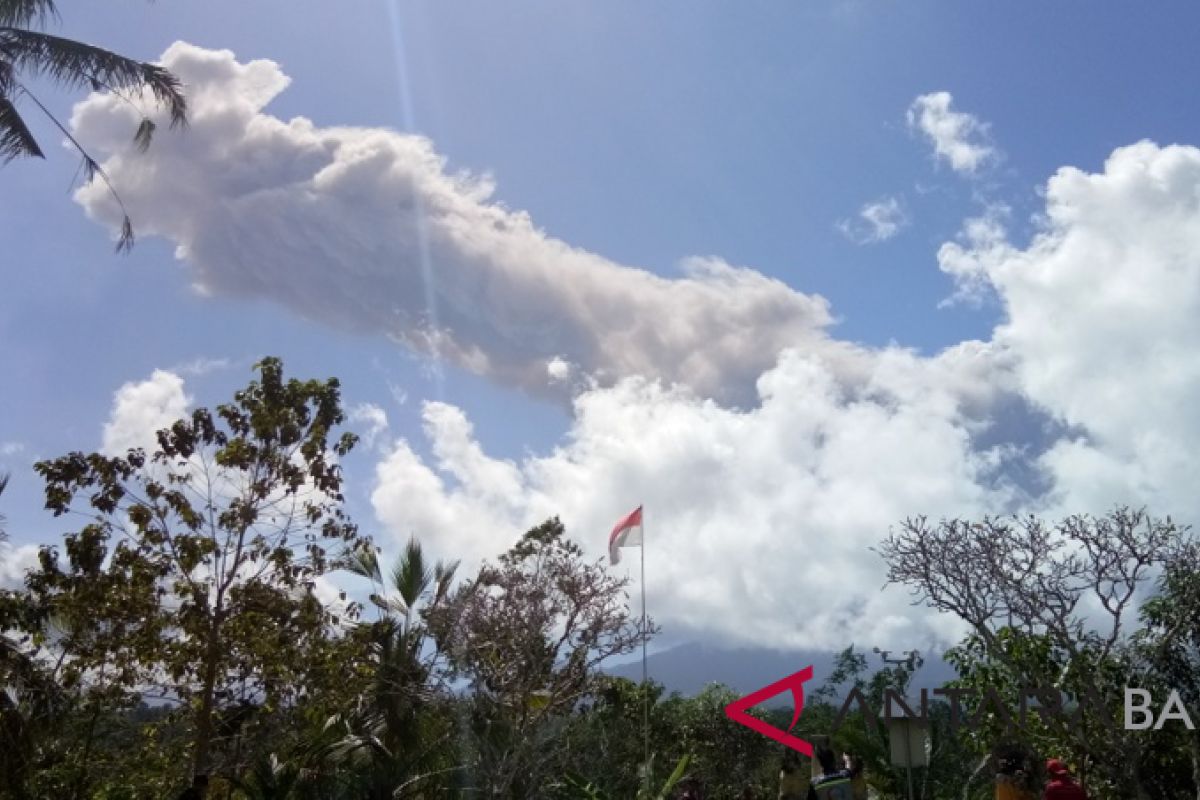Karangasem (Antaranews Bali) - The eruption of Mount Agung in Bali still continues to happen, according to the Minister of Energy and Mineral Resources Ignasius Jonan here on Thursday.
"The Center for Volcanology and Geological Hazard Mitigation (PVMBG) is monitoring the volcanic activity of Mount Agung everyday using seismograph, and it is found to be still increasing," the minister stated at the Mount Agung monitoring post in the village of Rendang, Karangasem.
Based on analysis of the eruptions so far, deformation has reduced, and it is believed that the ejection of burning lava and rocks would not surpass the 4-kilometer danger zone radius from the crater, Jonan remarked.
He added that according to PVMBG monitoring, strong eruptions had indeed happened weeks ago, sending burning lava, but it was still limited, and the hot lava had not spread anywhere.
"According to the latest report received from PVMBG staff at Mount Agung monitoring post as well as satellite pictures, the lava in the crater was still in the form of liquid. If it solidifies, there would pressure from below, and it could be dangerous," he revealed.
Head of PVMBG central office, Kasbani, stated that Mount Agung`s eruption potential is still continuing as on June 28, or explosively at a low scale.
"The height of the ash column has reached around 2,500 to 2,800 meter from the crater, and so far, no volcanic materials, such as ash and rocks, have been ejected for more than four kilometers away," he noted.
Based on seismograph and deformation data, there have not been signs or indications of a bigger eruption, let alone hot lava, he added.
"However, the potential for burning lava will still continue when Mount Agung undergoes strombolian eruption," he explained.
He revealed that magma monitored through satellite images was still in the form of liquid, and the gas produced was not much for ejection to be far off.
"Indeed, from the monitoring post, rumbling sound and bangs are often heard coming from the mountain, but this is normal," he pointed out.
He added that the volume of materials inside the mountain was still around 27 to 28 million cubic meters at present. (WDY)










